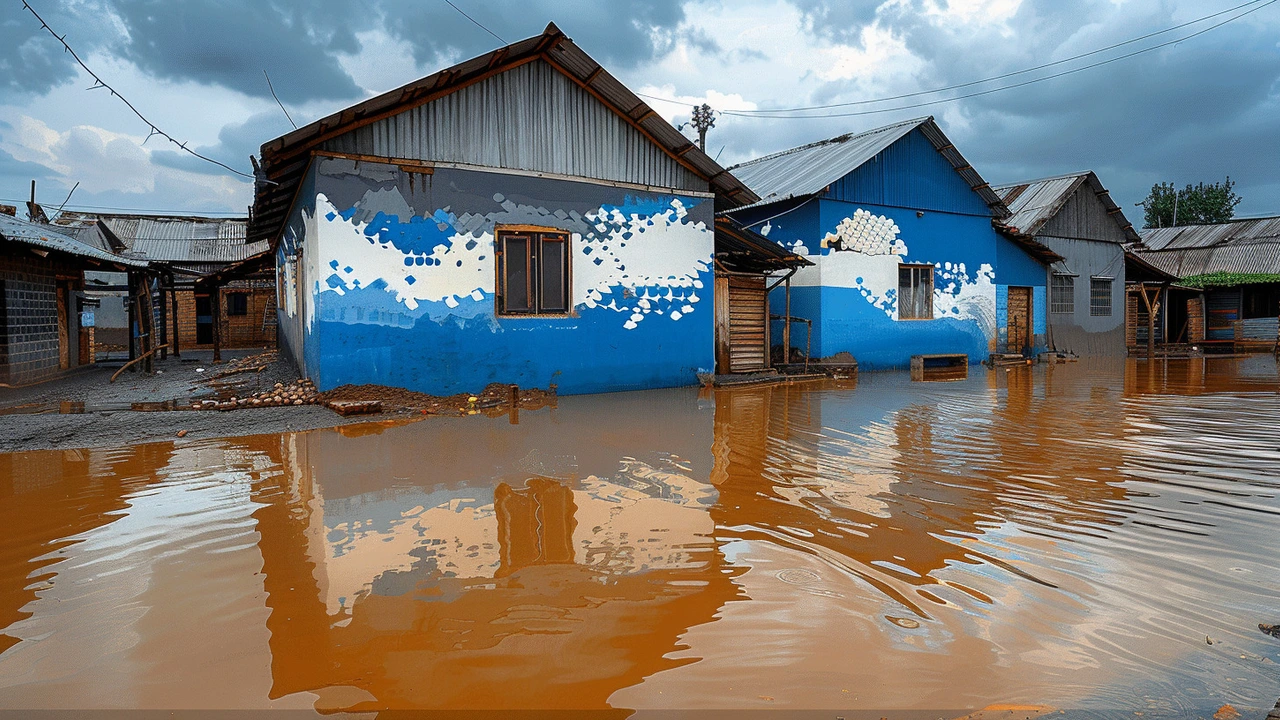Devastation Across Kenya Due to Torrential Rains
The East African nation of Kenya is currently facing severe weather calamities, with torrential rains leading to widespread flooding that has had catastrophic impacts on its population and infrastructure. Official reports from the National Disaster Operations Centre (NDOC) as of May 3, 2024, highlight the harrowing consequences: approximately 210 people have lost their lives, 164 have been injured, and nearly 205,000 individuals are affected in different capacities. The situation is aggravated with 72 people missing, adding to the urgency of the ongoing search and rescue operations.
Mass Displacement and Infrastructure Damage
The scale of displacement provides a clear picture of the disaster’s magnitude, with over 194,000 people having to leave their homes and livelihoods behind. This large-scale displacement has put immense pressure on the resources and capacities of the humanitarian assistance teams. Moreover, essential structures including 608 small businesses, 39 schools, and 13 health facilities have sustained damage, disrupting daily life and access to basic services. The agricultural sector is also severely hit, with 36,344 acres of croplands ruined, thereby threatening food security in the aftermath of this natural disaster. Livestock losses have been reported as well, with at least 8,565 animals perishing, further impacting the economic stability of the agricultural communities.
Response from National and Local Authorities
Prompted by the magnitude of the crisis, President William Ruto has implemented significant measures to safeguard his citizens. One pivotal directive from President Ruto includes the indefinite postponement of the school term, prioritizing safety and the management of the crisis over educational schedules. Additionally, a stark warning has been issued by the Kenya Meteorological Department predicting ongoing heavy rains that threaten to exacerbate the current state of floods especially in low-lying areas. Correspondingly, authorities have mandated evacuations for residents near high-risk zones such as overfilled dams.
Emergency services, including the Kenya Red Cross Society, are deeply engaged in providing relief. Reported cases of cholera in Garsen Sub-County due to contaminated water highlight the dire health challenges emerging amidst the flooding. The ongoing efforts are focused not just on immediate relief, but also on preventing further outbreaks of water-borne and vector-borne diseases, which could complicate the already dire public health environment.
Challenges in Access and Ongoing Risks
The logistics of reaching those affected are complex; damaged infrastructure has rendered many areas inaccessible, complicating efforts by rescue and relief teams to provide necessary support. The Kenya National Highways Authority (KeNHA) reports that several major roads have been either closed or are at risk, complicating travel and relief operations. This obstruction also poses a significant challenge for the distribution of aid and movement of displaced populations seeking refuge in safer areas.
The government's response extends to preparing for secondary impacts of the floods. These preparations involve widespread public health measures to counter the potential rise in disease from standing water and the effects of displacement on crowded temporary shelters. The situation calls for a coordinated approach integrating local government efforts with international aid to effectively manage the catastrophic impact and aid in recovery and rebuilding efforts.
International Call for Aid
As the situation develops, there is an increasing need for international support and aid. The scale of the disaster overwhelms local capacity, necessitating broad-based support mechanisms from international partners and aid organizations. This collaborative effort is crucial to managing the immediate fallout and planning the long-term recovery that will be needed to restore normalcy and public confidence after such a traumatic series of events.
The coming days are critical as the nation braces for more rainfall and the accompanying challenges it brings. The resilience of the Kenyan people is being tested as they navigate through this crisis, supported by national efforts and international solidarity in the face of overwhelming odds.






Write a comment